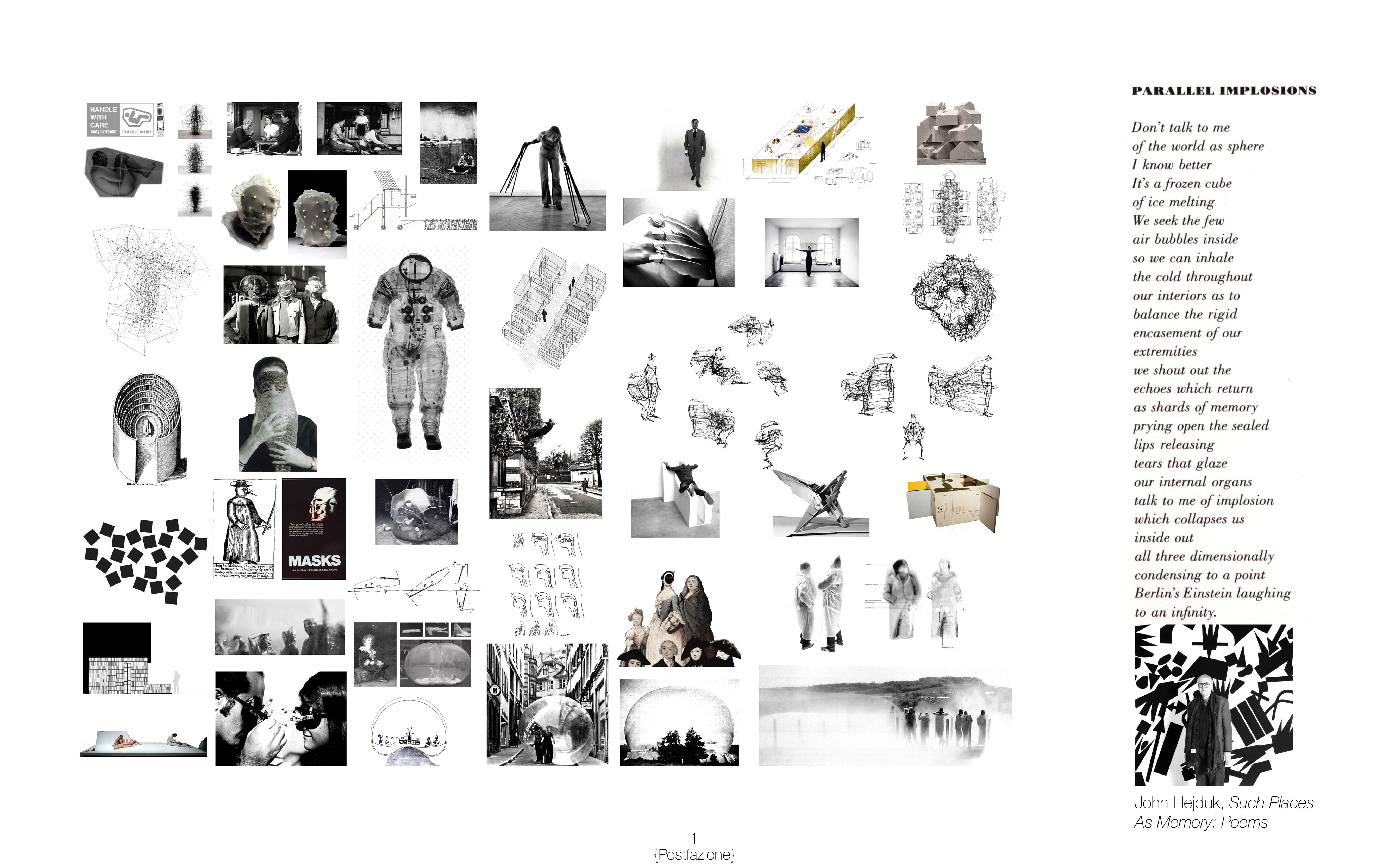Parallel Implosion.
Density and intimacy in public space
Project type: PhD in Architecture and Urban Design Year: 2015
Forty years from now, we will reach the threshold of 10 billion inhabitants and 75% of the world population will live an urban existence. Hyper-density and hyper-expansion of housing is already encouraging experimentation of different corporeal scales, modifying the customary proportions to which our bodies have adapted. Tokyo has adapted the capsule hypothesised by Kenzo Tange, Kisho Kurokawa and Toyo Ito, where density and intimacy represent a design and temporal synthesis, encouraging new architectural and planning transformations such as the manga kissa, karoke box and love hotel. In this scenario, the research sets out to identify the real conditions which favour the simultaneous presence of the individual sphere and the "culture of congestion" theorised by Rem Koolhaas.
Two antithetic realities, the first of isolation, similar to a nest moulded by the weight of the body; the second chaotic, saturated and intricate. The study is organised into an initial theoretical analysis, followed by empirical investigation through two case studies of uninterrupted efficacy - the Tsukiji fish market and the Jimbocho city of books. The considerations deriving from the direct analysis and documentation acquired define a number of characteristics in common to the cases observed. Both markets are formed by the assembly of compressed, modelled micro-architecture around an intimate and personal space for consumption, proposing hybrid formal/informal systems located in the pulsating heart of the largest megalopolis.
Finally, the transformation process has successfully merged the social-cultural archetypes and components of a postmodern metropolis into the same urban context. They become strategies, hypotheses, postulates and soft operations to transform the immeasurable to adapt the small in which the two antithetic dimensions coincide. This favours a benevolent relationship between architectural structure and body, the space becomes charged with a social presence where the sense of public is not perceived rationally only, but above all physically.





Project type: PhD in Architecture and Urban Design Year: 2015
Forty years from now, we will reach the threshold of 10 billion inhabitants and 75% of the world population will live an urban existence. Hyper-density and hyper-expansion of housing is already encouraging experimentation of different corporeal scales, modifying the customary proportions to which our bodies have adapted. Tokyo has adapted the capsule hypothesised by Kenzo Tange, Kisho Kurokawa and Toyo Ito, where density and intimacy represent a design and temporal synthesis, encouraging new architectural and planning transformations such as the manga kissa, karoke box and love hotel. In this scenario, the research sets out to identify the real conditions which favour the simultaneous presence of the individual sphere and the "culture of congestion" theorised by Rem Koolhaas.
Two antithetic realities, the first of isolation, similar to a nest moulded by the weight of the body; the second chaotic, saturated and intricate. The study is organised into an initial theoretical analysis, followed by empirical investigation through two case studies of uninterrupted efficacy - the Tsukiji fish market and the Jimbocho city of books. The considerations deriving from the direct analysis and documentation acquired define a number of characteristics in common to the cases observed. Both markets are formed by the assembly of compressed, modelled micro-architecture around an intimate and personal space for consumption, proposing hybrid formal/informal systems located in the pulsating heart of the largest megalopolis.
Finally, the transformation process has successfully merged the social-cultural archetypes and components of a postmodern metropolis into the same urban context. They become strategies, hypotheses, postulates and soft operations to transform the immeasurable to adapt the small in which the two antithetic dimensions coincide. This favours a benevolent relationship between architectural structure and body, the space becomes charged with a social presence where the sense of public is not perceived rationally only, but above all physically.




